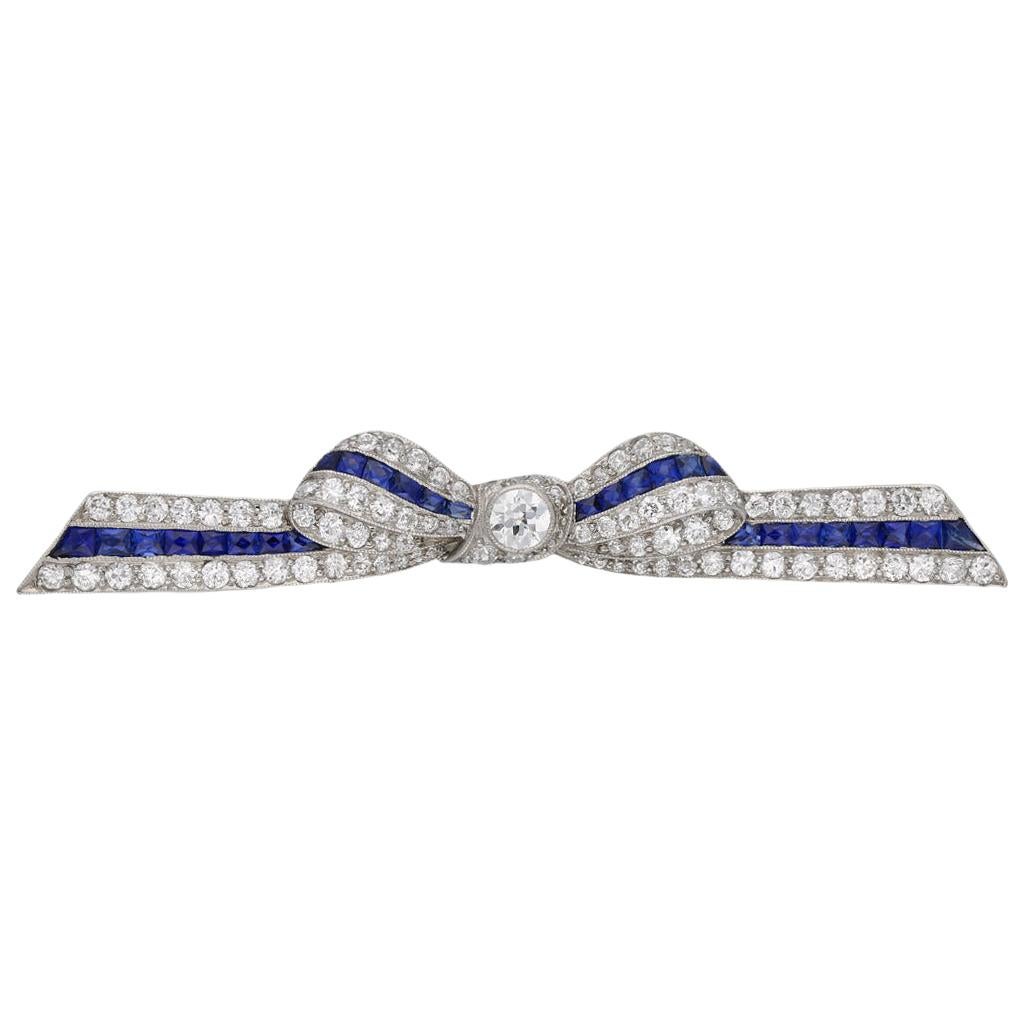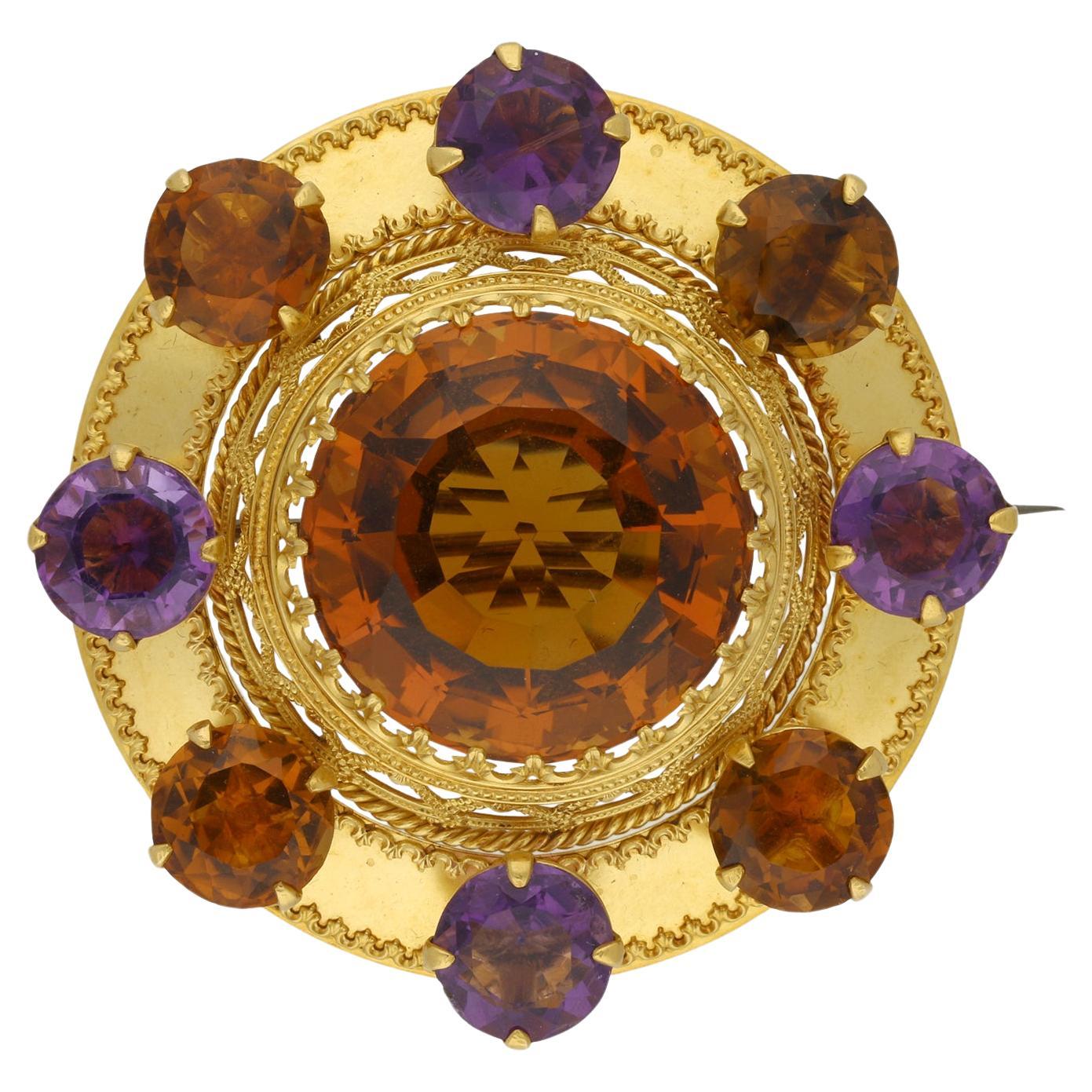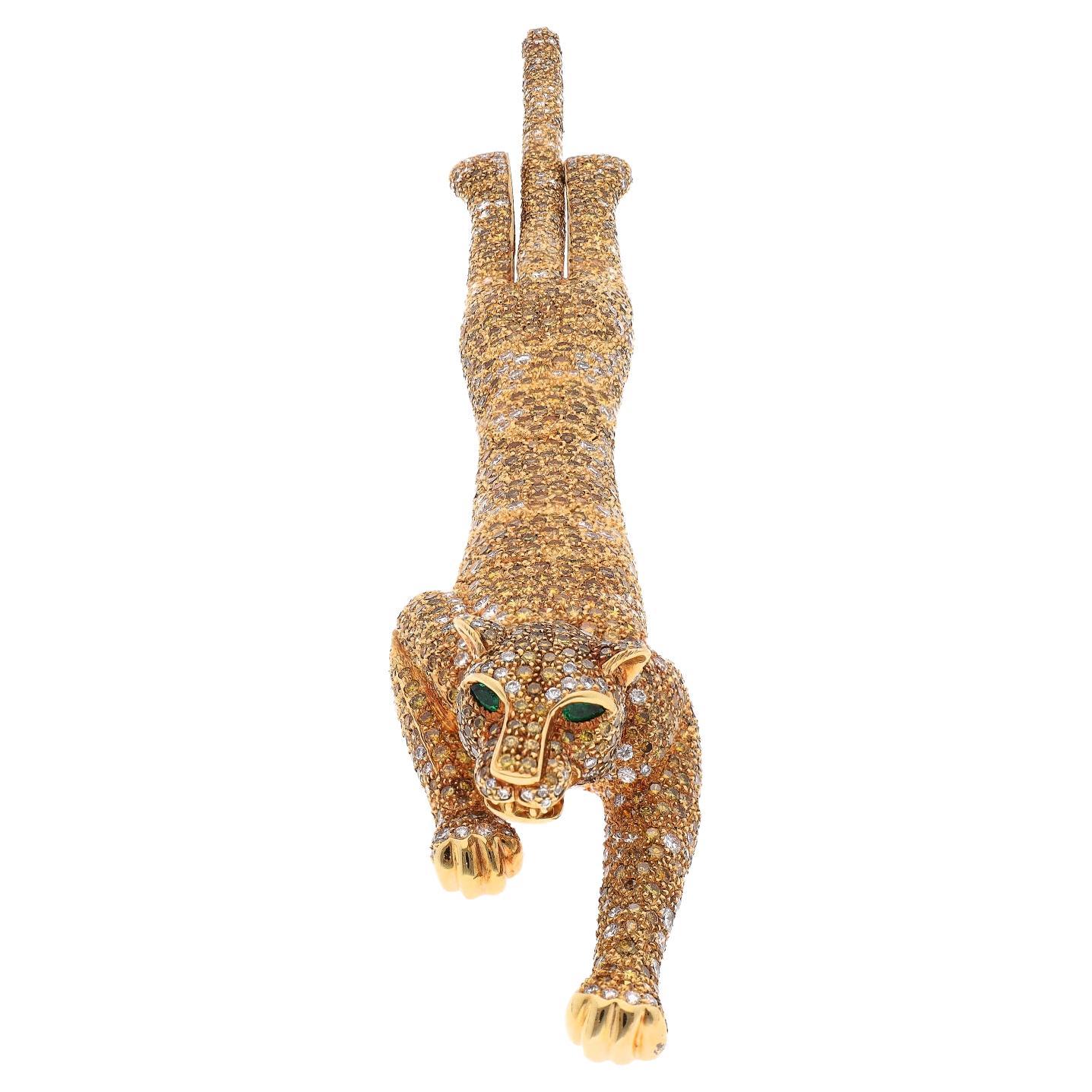Items Similar to Vintage Ruby Crystal Brooch, Regal Motif, Silver-Tone Setting Mid 1900s
Want more images or videos?
Request additional images or videos from the seller
1 of 6
Vintage Ruby Crystal Brooch, Regal Motif, Silver-Tone Setting Mid 1900s
About the Item
Size: 1 1/8 inches
Discover the elegance of the past with our vintage mid-1900s brooch, featuring a striking triangular pattern of ruby-colored crystals. Each crystal is meticulously prong-set to showcase its brilliance and is complemented by a halo of delicate clear crystals. Measuring at a charming 1 1/8 inch, this exquisite piece is framed in a classic silver-tone setting, making it a timeless addition to any vintage jewelry collection. Perfect for adding a touch of glamour to your ensemble or as a unique gift for a loved one. Embrace the allure of vintage sophistication today!
- Stone:Crystal
- Stone Cut:Round Cut
- Dimensions:Width: 1.13 in (28.71 mm)
- Style:Retro
- Place of Origin:North America
- Period:Mid-20th Century
- Date of Manufacture:Mid 1900s
- Condition:
- Seller Location:Milford, DE
- Reference Number:
About the Seller
4.9
Platinum Seller
These expertly vetted sellers are 1stDibs' most experienced sellers and are rated highest by our customers.
Established in 2012
1stDibs seller since 2018
455 sales on 1stDibs
Typical response time: 1 hour
- ShippingRetrieving quote...Ships From: Milford, DE
- Return PolicyA return for this item may be initiated within 1 day of delivery.
More From This SellerView All
- Vintage Monet Republican Elephant Pin Brooch in Silver, Red and Blue EnamelBy MonetLocated in Milford, DEThis patriotic pin features a silver-tone elephant, accented with clear crystals and red & blue enamel. By Monet. Marks / hallmarks / etc: MonetCategory
20th Century American Retro Brooches
MaterialsCrystal, Enamel
- Antique Faux Coral Floral Pin in Brass Tone, Prong Set Beads and Flower MotifsLocated in Milford, DEDiscover the charm of vintage elegance with the antique floral brass pin, featuring a beautifully carved faux coral flower centerpiece. This exquisite pin is a testament to classic c...Category
20th Century American Art Nouveau Brooches
- Fedoskino Russian Mother of Pearl Lacquer German Silver Painted Woman Pin BroochLocated in Milford, DEAn exquisite Russian Fedoskino brooch set in a beautiful German silver bezel. Features a likeness of a beautiful woman in a floral head wreath, hand-p...Category
20th Century Russian Russian Empire Brooches
MaterialsSilver
- Sadie Green Vintage Cosmic Opal Cabochon Pin Brooch in Brass with Dangle AccentsLocated in Milford, DEGorgeous pin brooch by Sadie Green. Features a centerpiece cosmic faux opal cabochon in a Victorian-style setting, accented with faceted crystals and dangl...Category
Mid-20th Century American Retro Brooches
MaterialsCrystal
- Torino Gold Floral Clip On Earrings and Pin Brooch, Retro Costume Jewelry SetLocated in Milford, DEA pair of retro clips and a pin by Torino, featuring exquisite floral motifs in gold. Gold-plated. Marks / hallmarks / etc: Torino on pin Pin: 2 x 1.3 inches Earrings: 1 inch eachCategory
20th Century Retro Clip-on Earrings
MaterialsGold Plate, Yellow Gold
- Retro Gold Pastel Inlay Bird Pin Brooch, Teal and Purple, 1970sLocated in Milford, DEA stylish golden bird! This elegant accessory features textured enamel inlays in lilac, teal, and white. Gold-filled.Category
Mid-20th Century American Retro Brooches
MaterialsGold-filled
You May Also Like
- Vintage Ruby Onyx and Diamond Classic Car BroochLocated in London, GBHere we have a superb vintage brooch. The piece has been crafted from 18ct yellow gold into the shape of a classic car from the 1930s. Automobiles of the 1930s exhibited many notable...Category
Vintage 1930s Brooches
MaterialsDiamond, Onyx, Ruby, Gold, Yellow Gold, Enamel
- Marcus & Co. Sapphire and Diamond Bow Brooch, American, circa 1935Located in London, GBSapphire and diamond bow brooch by Marcus & Co, American, circa 1935. A yellow gold and platinum bow form brooch set with one central row of twenty eig...Category
Vintage 1930s American Art Deco Brooches
MaterialsDiamond, Sapphire, Platinum
- John Brogden Shell Cameo Brooch and Earrings, English, circa 1870By John BrogdenLocated in London, GBAntique shell cameo brooch and earrings by John Brogden, English, circa 1870. A yellow gold suite of jewellery, the brooch composed of a horizontally situated oval Bull’s Mouth shell cameo of the Greek goddess Selene riding a serpentine dragon in a rubover collet setting, encircled by a conforming frame of gold beading and twisted gold wire punctuated with four gold palmette form plaques engraved and decorated with dark blue enamel and placed at the cardinal points, the reverse mounted with a hinged pin and scroll clasp, the earrings each composed of a vertical oval Bull’s Mouth shell cameo engraved with a bust length portrait of Selene with crescent-set headdress, encircled by a conforming frame matching that of the brooch with the addition of a pendant decoration composed of a horizontal bar of gold beading and twisted gold wires suspending gold link chains graduated from centre and ending in conical gold elements, the reverses mounted with French wire fittings, all in a fitted red leather case, the interior marked ‘FIRST CLASS PARIS MEDAL/ 1855.1867.1851/ PARIS FIRST CLASS & LONDON PRIZE MEDALS/ JOHN BROGDON/ Goldsmith/ MANUFACTORY/ 16, Henrietta St. Covent Garden/ London’. The cameo—defined as a gem, usually either a mineral or a shell, upon which a design has been carved in relief—is believed to have originated in Hellenistic Greece, during the third century BC. These miniature sculptures, at that time confined to the medium of hardstone, are thought to have been made with the primary purpose of personal adornment. The same practice of mounting cameos in jewellery was then continued by the Ancient Romans, and they are known to have been worn by many a Roman emperor. After the fall of Rome the fashion for cameos went into a decline, until it was again revived during the Renaissance period, brought about by a keen interest in the ancient world. At this time both antique and contemporary cameos were mounted in jewellery, as well as collected as objet d’art. The art of cameo cutting was revived in Italy, where it would remain a centre for the coming centuries. Again there was a lull in interest in carved gemstones, until the Neoclassical revival of the eighteenth century, largely stimulated by the discoveries of the ancient Roman cities of Pompeii and Herculaneum. As with the Renaissance, antique specimens were generally prized over modern cameos, and the worldliest men in Europe held them among their collections of art and antiques. That said, carving centres in Rome and Torre del Greco (near Naples) in Italy were established in response to the demand of the Grand Tourists, who travelled to Italy and Greece to become educated in the wonders of the ancient world. It was at this time that shell cameos, mostly made in Torre del Greco due to its proximity to the sea, became more popular, owing to the relative ease in carving shell over hardstone. In addition to Rome, hardstone cameos also became a specialty of Idar Oberstein, Germany, which had a long history with both the gem mining and cutting trade. In a shift away from the collector’s cases of the previous century, the nineteenth century saw a strengthening in the fashion for wearable cameos. After the Empress Josephine donned a cameo-set suite of jewellery at the coronation of Napoleon in 1804, cameo jewellery became all the rage. Napoleon played a further hand in promoting the art by establishing a gemstone carving school in Paris, inspired by his appreciation for the arts of the ancient world. By the mid-nineteenth century shell cameos, in part due to their lightness compared with hardstone cameos, were the height of fashion. Large shell cameos as well as hardstone cameos were set into contemporary mounts, often as suites of jewellery. Some of the best cameos of the nineteenth century—carved by a select group of recognized carvers—were set into revivalist mounts, corresponding to the subject matter. In Victorian England cameo jewellery was particularly prized, due in part to the fact that the Queen owned and wore a number of cameo jewels. One example which can often be seen in official portraits is the Badge of the Order of Victoria and Albert, carved by Tommaso Saulini of Rome, who also produced cameos for the maker of the present suite, John Brogden. To meet demand some carvers set themselves up in London, including William Schmidt, a German carver from Idar Oberstein, who produced cameos for top London jewellers, including Brogden, Carlo Giuliano and Child & Child. In fact, Schmidt purports to have been the first to carve cameos out of opal, which Brogden reportedly displayed in the Paris Exhibition of 1878. An extant example, now in the collection of the British Museum, was set by the Giuliano firm. Regarding subject matter, cameos throughout time have been largely figural, from bust length profile portraits to scenes with multiple full-length figures, and sometimes animals. Ancient Greek and Roman cameos often depicted mythological scenes as well as contemporary figures. During the Renaissance, mythological scenes were popular, often taken directly from ancient sculpture, as well as portraits of notable contemporary figures. During the eighteenth and nineteenth centuries, due to the revivalist styles, both Renaissance and Classical subjects were copied and set into matching (and sometimes unmatching) revivalist mounts. From the Renaissance through the Victorian era, being able to recognize the source of the carving in a cameo was a mark of erudition, revealing in the wearer knowledge of Classical art. As mentioned, the present cameo parure...Category
Antique 1870s English Victorian Brooches
MaterialsYellow Gold
- Victorian amethyst and citrine brooch, circa 1860.Located in London, GBVictorian amethyst and citrine brooch. Set to centre with one round old cut citrine in an open back claw setting with an approximate weight of 60 carats, encircled by four round old ...Category
Antique 1860s Brooches
MaterialsAmethyst, Citrine, Yellow Gold
- Ruby and diamond brooch, circa 1945.Located in London, GBRuby and diamond brooch. Set to centre with thirty four square baguette cut natural unenhanced rubies in open back channel settings with a combined approximate weight of 3.40 carats,...Category
Vintage 1940s Brooches
MaterialsDiamond, Ruby, Yellow Gold, Platinum
- Cartier Paris Yellow Cognac White Diamond Panther BroochBy CartierLocated in New York, NYCartier Paris Yellow Cognac White Diamond Panther Brooch Cartier describes the Panther as 'The Panther is Cartier’s iconic animal: a wild, untamable anim...Category
2010s French Modern Brooches
MaterialsWhite Diamond, 18k Gold
Recently Viewed
View AllMore Ways To Browse
Vintage Jewelry Settings
Regal Jewelry
Regal Brooch
Art Deco Platinum Bar
Flower Gold Pearls Pin
14k Art Nouveau Pin
1960 Van Cleef
Art Nouveau Flower Brooch
Belle Epoque Brooch
Carved Flower Brooch
Onyx Gold Pin
Pave Leaves
Platinum And Diamond Bar Brooch
Aquamarine Pin
Aquamarine Pins
Diamond Platinum Clip Brooch
Platinum Diamond Art Deco Clip
Platinum Diamond Clip Brooches





